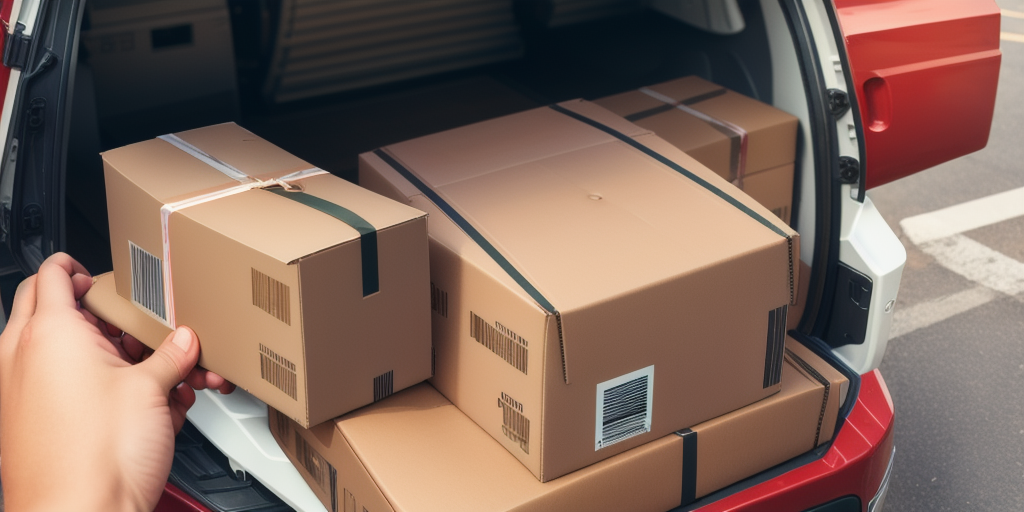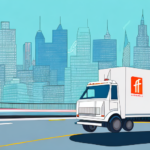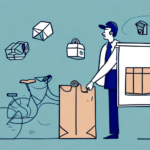Unlocking the Benefits of Last Mile Shipping
In the modern age of e-commerce, last mile delivery has become a pivotal aspect of the supply chain. As the final stage of the delivery process where customers receive their orders, optimizing last mile delivery significantly impacts customer satisfaction and the overall efficiency of the supply chain. This article delves into the concept of last mile shipping, its importance, and strategies to optimize it for maximum benefits.
Understanding Last Mile Shipping
The term "last mile" refers to the final leg of the delivery journey, from the distribution center to the customer's doorstep. It is often considered the most complex and costly part of the delivery process due to challenges like navigating local streets, traffic congestion, and ensuring timely deliveries. The primary goal of last mile delivery is to ensure orders arrive safely, promptly, and meet customer expectations.
With the surge in e-commerce, last mile delivery has gained prominence as customers increasingly demand faster and more reliable delivery options. This demand has spurred the adoption of innovative technologies and delivery methods, including drones and autonomous vehicles, aimed at streamlining the last mile process.
However, last mile delivery also presents challenges such as traffic congestion, parking restrictions, and the need for secure delivery solutions. To address these issues, many companies are exploring alternative delivery methods like locker systems and pick-up points, offering customers more flexible and convenient delivery options.
The Importance of Optimizing Last Mile Delivery
Optimizing last mile delivery is crucial for several reasons:
- Customer Satisfaction: Over 50% of customers consider delivery speed and quality as key factors in their shopping experience (ShipScience Customer Insights). Enhancing last mile delivery can boost customer loyalty and encourage repeat business.
- Cost Reduction: Efficient last mile delivery minimizes costs associated with failed deliveries, returns, and cancellations. Ensuring accurate deliveries on the first attempt saves both time and money.
- Environmental Impact: Optimized delivery routes and eco-friendly transportation options reduce the carbon footprint of delivery operations, contributing to sustainability and appealing to environmentally conscious consumers.
By prioritizing the optimization of last mile delivery, businesses can achieve a balance between cost-efficiency and high customer satisfaction.
Enhancing Customer Experience through Last Mile Shipping
Last mile shipping plays a critical role in shaping the customer experience. Timely and reliable deliveries can differentiate a business from its competitors, while delays or poor delivery conditions can lead to customer dissatisfaction and lost sales.
Key factors influencing customer experience in last mile delivery include:
- Delivery Timeliness: Customers expect their orders to arrive within the promised timeframe. Delays can erode trust and affect customer satisfaction.
- Delivery Condition: Ensuring packages arrive in good condition is essential for maintaining product integrity and customer trust.
- Communication: Providing real-time updates and transparent communication about delivery status helps manage customer expectations and enhances their overall experience.
To meet these expectations, businesses are investing in technologies like GPS tracking and real-time delivery notifications, as well as exploring innovative delivery solutions such as drones and autonomous vehicles to mitigate challenges like traffic and adverse weather conditions.
Leveraging Technology to Improve Last Mile Delivery
Technology is at the forefront of transforming last mile delivery, offering tools and solutions that enhance efficiency, accuracy, and customer satisfaction. Key technologies include:
- Route Optimization Software: Helps planners design the most efficient delivery routes, reducing travel time and fuel consumption.
- GPS Tracking: Provides real-time location data of delivery vehicles, allowing businesses and customers to monitor deliveries live.
- Real-Time Delivery Updates: Keeps customers informed about the status of their deliveries through automated notifications.
- Autonomous Vehicles: Self-driving delivery vehicles can operate continuously, reducing delivery times and costs while minimizing human error.
These technologies not only streamline the delivery process but also offer customers greater flexibility and control over their deliveries, such as choosing delivery windows or rerouting packages to alternative addresses.
According to a ShipScience report, businesses that adopt advanced delivery technologies see a 20% reduction in delivery costs and a 15% increase in customer satisfaction.
Outsourcing Last Mile Delivery: Benefits and Considerations
Outsourcing last mile delivery to third-party logistics providers (3PLs) can offer numerous advantages:
- Expertise: 3PLs specialize in logistics and possess the knowledge to optimize delivery routes and processes effectively.
- Cost Efficiency: Leveraging the infrastructure of 3PLs can reduce operational costs related to fleet management and personnel.
- Scalability: 3PLs can easily adjust delivery capacities to meet fluctuating demands without the need for significant capital investment.
- Enhanced Delivery Options: Partnering with 3PLs allows businesses to offer a wider range of delivery options, such as same-day or next-day delivery.
For example, partnering with a 3PL can provide businesses with access to advanced tracking systems and real-time communication tools, improving transparency and reliability in the delivery process.
By outsourcing, businesses can focus on their core competencies while ensuring efficient and reliable last mile delivery.
Strategies to Reduce Last Mile Delivery Costs
Reducing last mile delivery costs is essential for maintaining profitability and competitive pricing. Effective strategies include:
- Route Optimization: Utilizing route optimization software to plan the most efficient delivery paths, minimizing travel distance and time.
- Shared Delivery Routes: Partnering with other businesses to share delivery routes, increasing load capacity and reducing per-unit costs.
- Alternative Delivery Methods: Implementing bicycle or electric vehicle deliveries can lower fuel costs and reduce environmental impact.
- Partnering with 3PLs: Outsourcing to specialized logistics providers can lead to cost savings through their optimized delivery networks.
- Improving Address Accuracy: Ensuring accurate customer addresses reduces failed deliveries and the associated costs of redelivery attempts.
Additionally, offering delivery alternatives such as pick-up locations or lockers can decrease the number of failed delivery attempts and lower overall delivery costs.
Businesses that implement these strategies can achieve significant cost reductions, enhancing their overall operational efficiency.
Overcoming Challenges in Last Mile Shipping
Last mile shipping comes with its own set of challenges that businesses must address to ensure successful delivery operations:
- Traffic Congestion: Heavy traffic can lead to delays and increased delivery times.
- Unpredictable Weather: Adverse weather conditions can disrupt delivery schedules and impact the condition of delivered goods.
- High Delivery Costs: Managing the expenses associated with the last mile can strain budgets, especially for small businesses.
- Finding Reliable Delivery Personnel: Ensuring that delivery staff are dependable and knowledgeable about local areas is crucial for timely deliveries.
- Customer Communication: Maintaining clear and consistent communication with customers regarding delivery status is essential for satisfaction.
To overcome these challenges, businesses can:
- Invest in Technology: Implementing route optimization and GPS tracking can mitigate the effects of traffic and improve delivery efficiency.
- Partner with 3PLs: Leveraging the expertise and resources of third-party logistics providers can help manage costs and enhance delivery reliability.
- Enhance Training Programs: Providing comprehensive training for delivery personnel ensures reliability and improves the overall delivery experience.
- Improve Communication: Utilizing automated notification systems and dedicated customer service teams can enhance real-time communication with customers.
Current Trends in Last Mile Delivery
The last mile delivery landscape is continually evolving with emerging trends and technologies shaping its future. Key trends to watch in 2023 include:
- Increased Use of Autonomous Vehicles: Self-driving delivery vehicles are becoming more prevalent, offering potential cost savings and efficiency improvements.
- Drone Deliveries: The use of drones for quick and contactless deliveries is expanding, particularly in urban areas.
- Artificial Intelligence and Machine Learning: AI-driven analytics are enhancing route optimization, demand forecasting, and operational decision-making.
- Green Delivery Solutions: Emphasizing sustainability, businesses are adopting electric vehicles and eco-friendly packaging to reduce their environmental impact.
- Same-Day and Instant Deliveries: With rising customer expectations, the demand for faster delivery options continues to grow.
These trends indicate a shift towards more efficient, sustainable, and customer-centric last mile delivery solutions.
Case Studies: Successful Last Mile Shipping Implementations
Examining successful implementations of last mile shipping strategies provides valuable insights into effective practices:
Amazon's Last Mile Innovations
Amazon has heavily invested in last mile delivery optimization through advanced technologies like route optimization software and GPS tracking. Their extensive network of distribution centers strategically located nationwide facilitates rapid delivery, often within same-day or next-day windows. Additionally, Amazon is exploring the use of drones and autonomous delivery vehicles to further enhance delivery speed and efficiency.
Walmart's Autonomous Vehicle Initiatives
Walmart has initiated the use of autonomous vehicles for last mile deliveries in select regions. These self-driving vehicles are designed to operate around the clock, significantly reducing delivery times and operational costs. By integrating autonomous technology, Walmart aims to improve delivery reliability and expand its delivery capabilities without increasing labor costs.
These case studies underscore the importance of adopting innovative technologies and strategic planning in optimizing last mile delivery.
Comparing Traditional and Modern Last Mile Shipping Approaches
Traditional last mile shipping methods typically involve a fleet of delivery vehicles operating on fixed schedules, often leading to inefficiencies and higher costs. In contrast, modern approaches prioritize flexibility, optimization, and customer-centric solutions through the use of advanced technologies and strategic initiatives.
Traditional Approaches
- Fixed delivery routes and schedules.
- Limited delivery options for customers.
- Higher operational costs due to inefficiencies.
Modern Approaches
- Real-time route optimization and dynamic scheduling.
- Flexible delivery options, including same-day and scheduled deliveries.
- Integration of technology such as GPS tracking, drones, and autonomous vehicles.
- Focus on sustainability through eco-friendly delivery solutions.
By adopting modern approaches, businesses can enhance delivery efficiency, reduce costs, and improve the overall customer experience.
Partnering with Third-Party Logistics Providers (3PLs)
Collaborating with third-party logistics providers (3PLs) offers several benefits for last mile delivery operations:
- Specialized Expertise: 3PLs possess in-depth knowledge and experience in logistics, enabling them to optimize delivery processes effectively.
- Enhanced Delivery Speed and Efficiency: Leveraging the infrastructure and resources of 3PLs can expedite delivery times and improve operational efficiency.
- Diverse Delivery Options: 3PLs can provide a wide range of delivery solutions, catering to various customer preferences and requirements.
- Cost Reduction: Outsourcing to 3PLs can lower delivery costs through economies of scale and optimized logistics networks.
- Improved Supply Chain Visibility: Advanced tracking and communication systems offered by 3PLs enhance transparency and reliability in the delivery process.
By partnering with a reputable 3PL, businesses can streamline their last mile delivery operations, ensuring timely and efficient deliveries while maintaining a focus on core business activities.
Measuring the Success of Last Mile Shipping Strategies
To assess the effectiveness of last mile shipping strategies, businesses should monitor key performance indicators (KPIs) that reflect delivery performance and customer satisfaction. Essential metrics include:
- Delivery Times: Tracking the average time taken to deliver orders helps in evaluating the efficiency of delivery processes.
- Delivery Costs: Monitoring the costs associated with last mile delivery provides insights into the financial efficiency of delivery operations.
- Customer Satisfaction: Measuring customer feedback and satisfaction levels indicates the quality of the delivery experience.
- Delivery Accuracy: Assessing the rate of successful first-time deliveries helps in identifying areas for improvement in the delivery process.
- Return Rates: Analyzing the frequency of returns can highlight issues in delivery accuracy or product handling.
Regularly tracking these metrics allows businesses to identify strengths and weaknesses in their last mile delivery strategies, enabling continuous improvement and optimization.
Future Prospects and Predictions for Last Mile Delivery
The last mile delivery industry is set for continued growth and innovation in the coming years, driven by advancements in technology and evolving consumer expectations. Key future prospects include:
- Increased Automation: The adoption of autonomous delivery vehicles and drones is expected to rise, enhancing delivery speed and reducing operational costs.
- Artificial Intelligence Integration: AI-driven analytics will play a crucial role in optimizing delivery routes, demand forecasting, and operational decision-making.
- Sustainable Delivery Practices: Emphasis on environmental sustainability will lead to more businesses adopting electric vehicles, eco-friendly packaging, and green delivery solutions.
- Enhanced Customer Experience: Personalized delivery options, real-time tracking, and improved communication will continue to enhance the overall customer experience.
- Urban Consolidation Centers: Establishing centralized hubs in urban areas will facilitate efficient delivery operations, reducing traffic congestion and environmental impact.
As the e-commerce landscape evolves, businesses must stay abreast of these trends and adapt their last mile delivery strategies to remain competitive and meet the dynamic needs of their customers.
Conclusion
Last mile shipping is a critical component of the modern e-commerce supply chain, directly influencing customer satisfaction and operational efficiency. By optimizing last mile delivery through the adoption of advanced technologies, strategic partnerships with 3PLs, and sustainable practices, businesses can achieve significant benefits, including cost savings, enhanced customer loyalty, and a reduced environmental footprint. As the industry continues to evolve, staying informed about the latest trends and continuously refining delivery strategies will be essential for maintaining a competitive edge in the fast-paced e-commerce landscape.






















